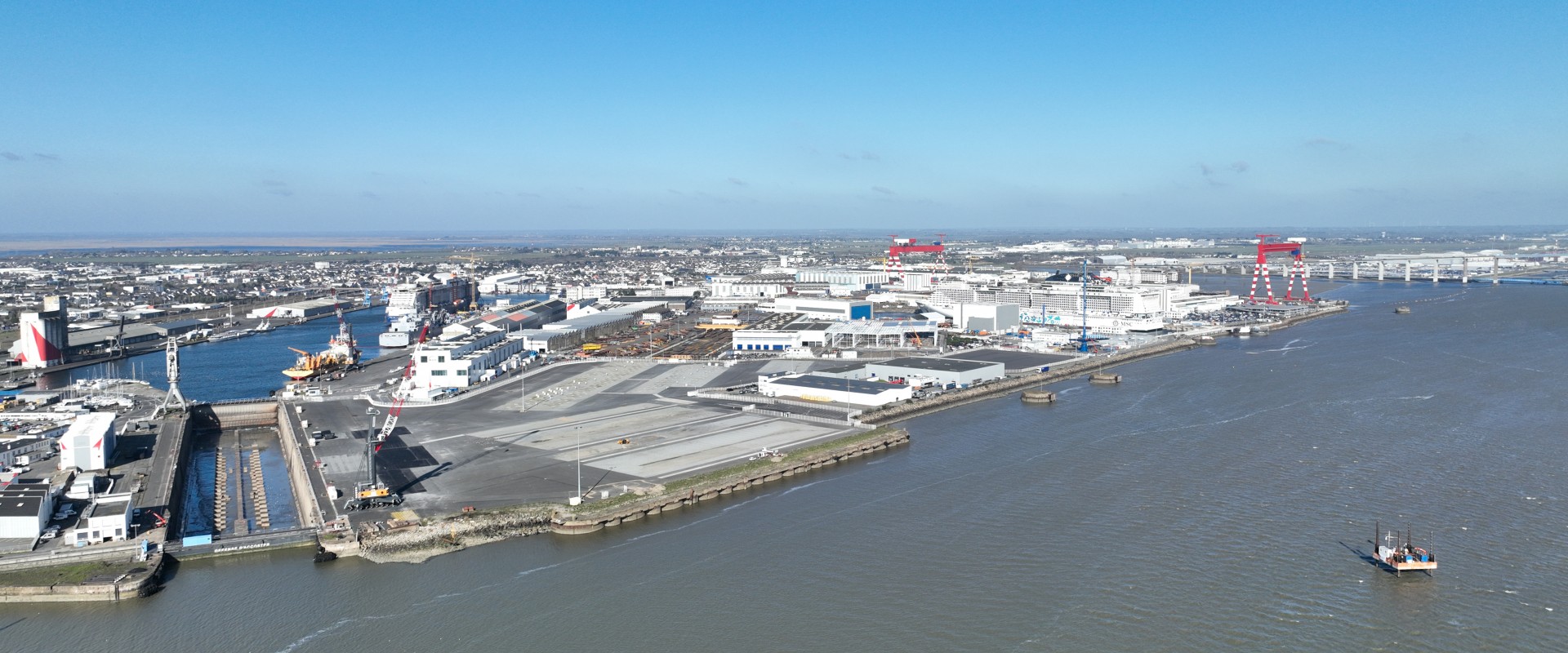
Deployment of Floating Wind Power: The First Studies for the Éole Project Have Been Launched
The Éole project, which aims to anticipate the development of floating offshore wind power, is going ahead in 2023. Nantes ‒ Saint Nazaire Port has launched the first on-site studies to provide an industrial and logistical integration base for this up-and-coming sector of activity.
The linear section of quay measuring 750 metres in length and reinforced to bear over 30 tonnes per m², extending out from the current logistics hub in Saint Nazaire, constitutes one of the major components of the Éole project. Floating wind power does indeed call for infrastructures that match the XXL requirements of the sector, and Nantes ‒ Saint Nazaire Port is making sure that the solutions proposed will meet the needs of the industrial firms involved. "We need to know about the composition of the soil in order to plan for the creation of trenches and access channels," notes Marc Labegorre, who is charge of the studies for the Éole project. "This also enables us both to identify the best locations to site the structures and to detect any sources of pollution."
Surveying the Substratum
To achieve this, a large-scale site reconnaissance campaign was conducted at the end of 2022 by Nantes ‒ Saint Nazaire Port, involving geophysical and pyrotechnic detection operations. This survey work carried out using non-destructive methods aimed to map out the substratum and the roof rock, and to locate any unexploded munitions. The geotechnical survey operations then commenced early in 2023. This work will add detail to the substratum mapping carried out previously, and will determine the characteristics of the soil layers for the purpose of dimensioning the structures.
Ecological Inventories
Analysis of underwater and airborne noise, marine mammals, air quality and sediment quality, fauna and flora… Ecological inventories are also in progress on an annual cycle, as are studies of water turbulence and hydro-sedimentary dynamics. "All these studies and all this data gathering will allow us to measure the potential effects of the project on its environment", concludes Marc Labegorre.
Find the complete article in issue West Link, numéro 107